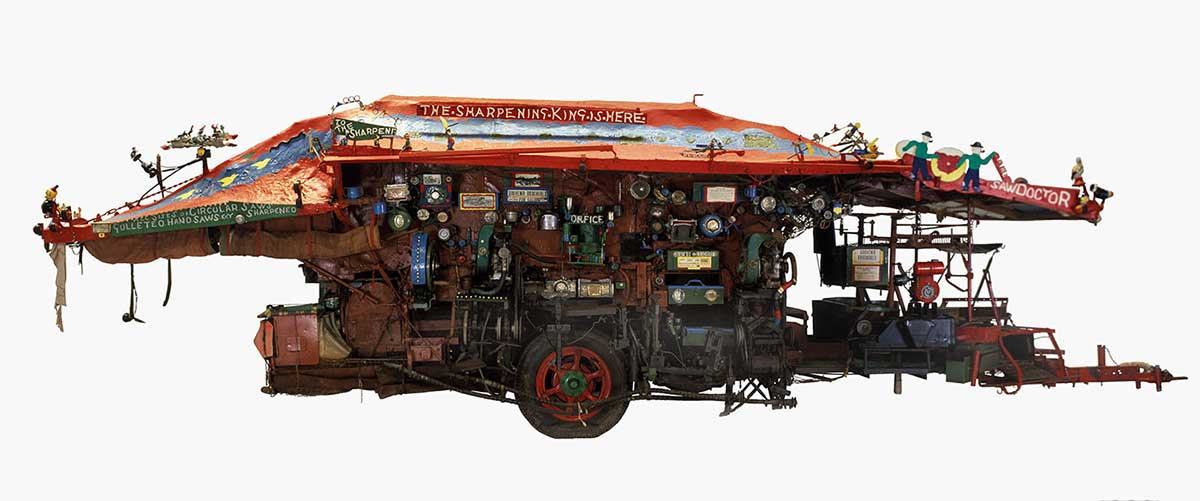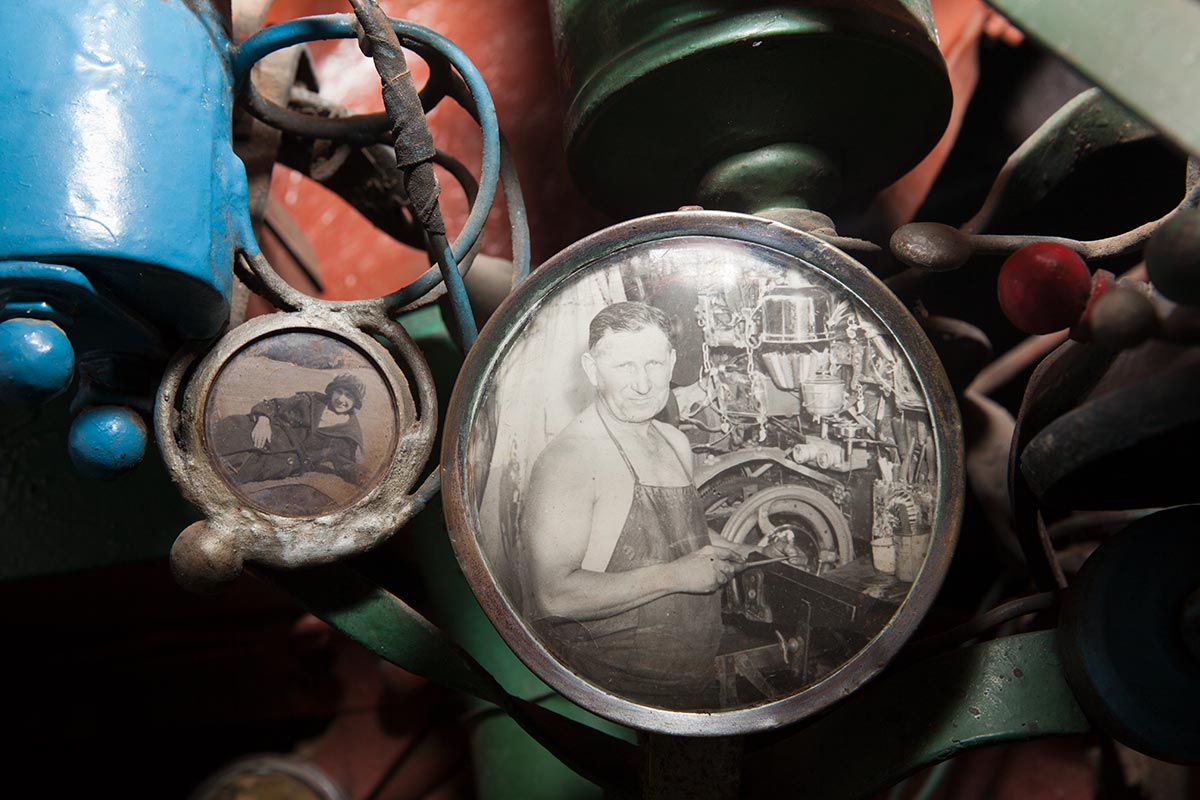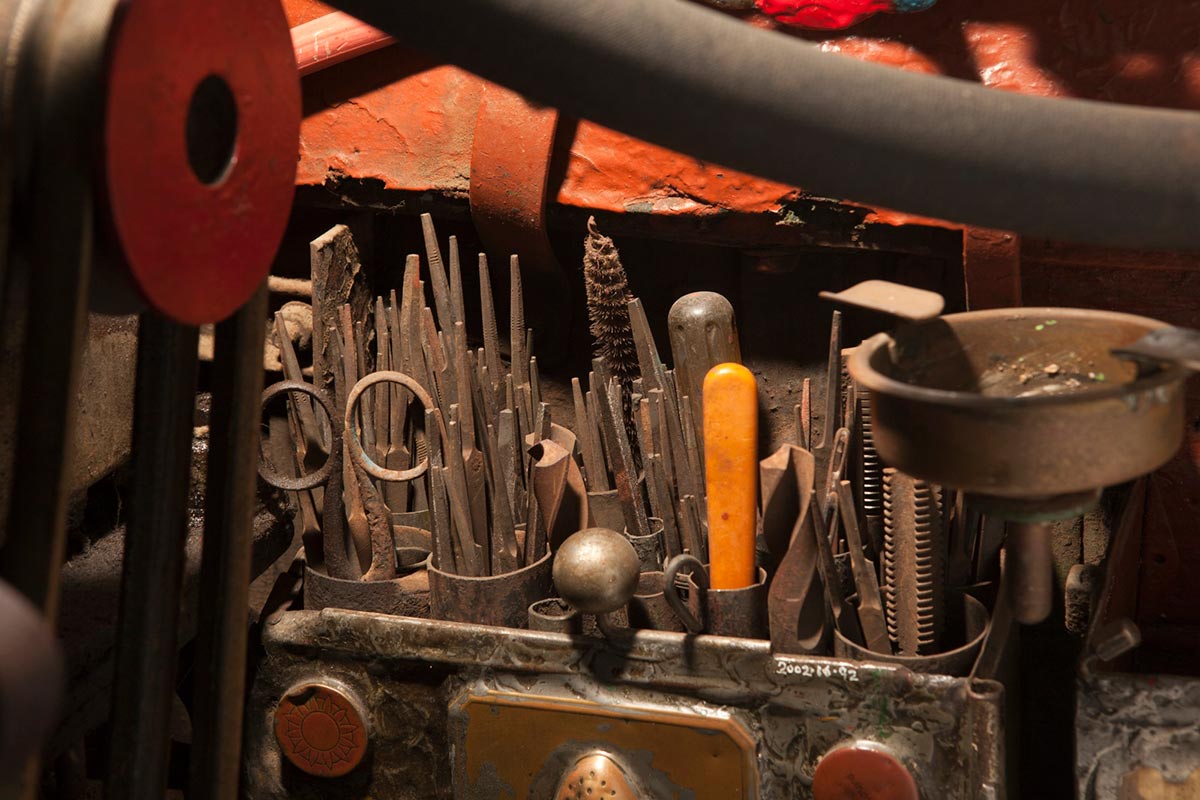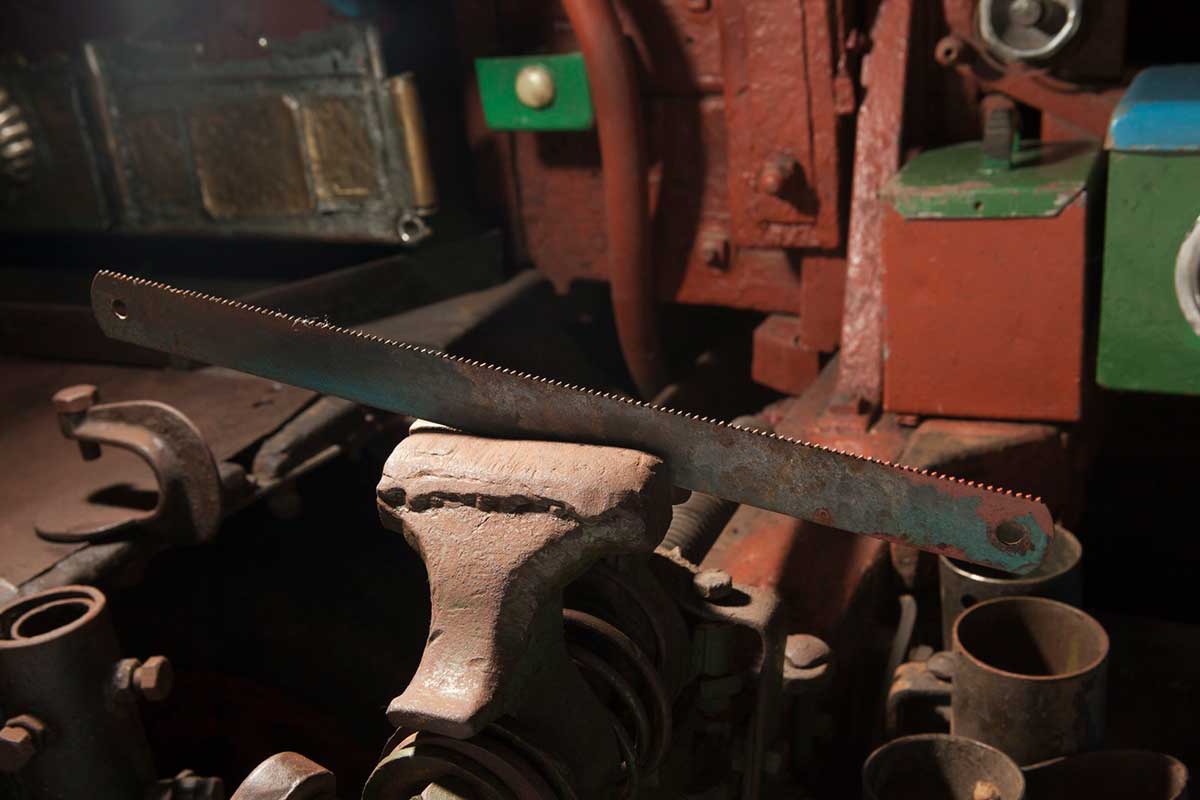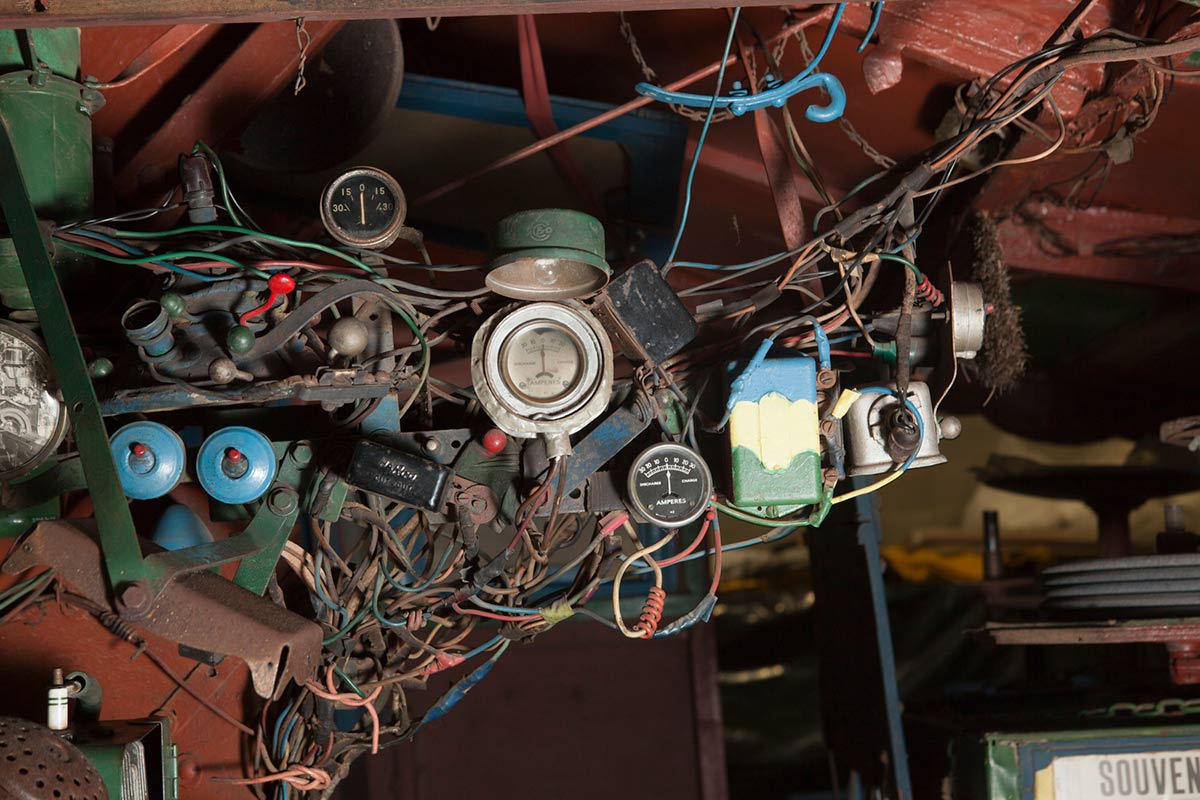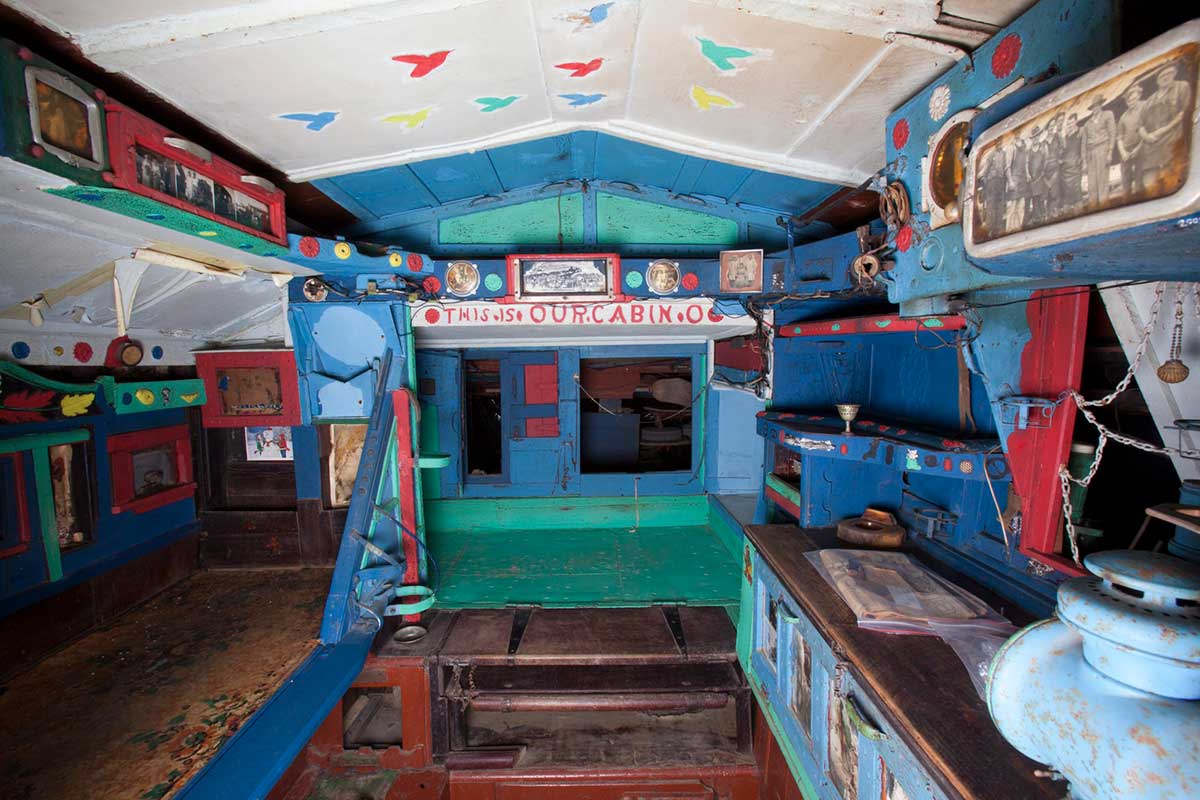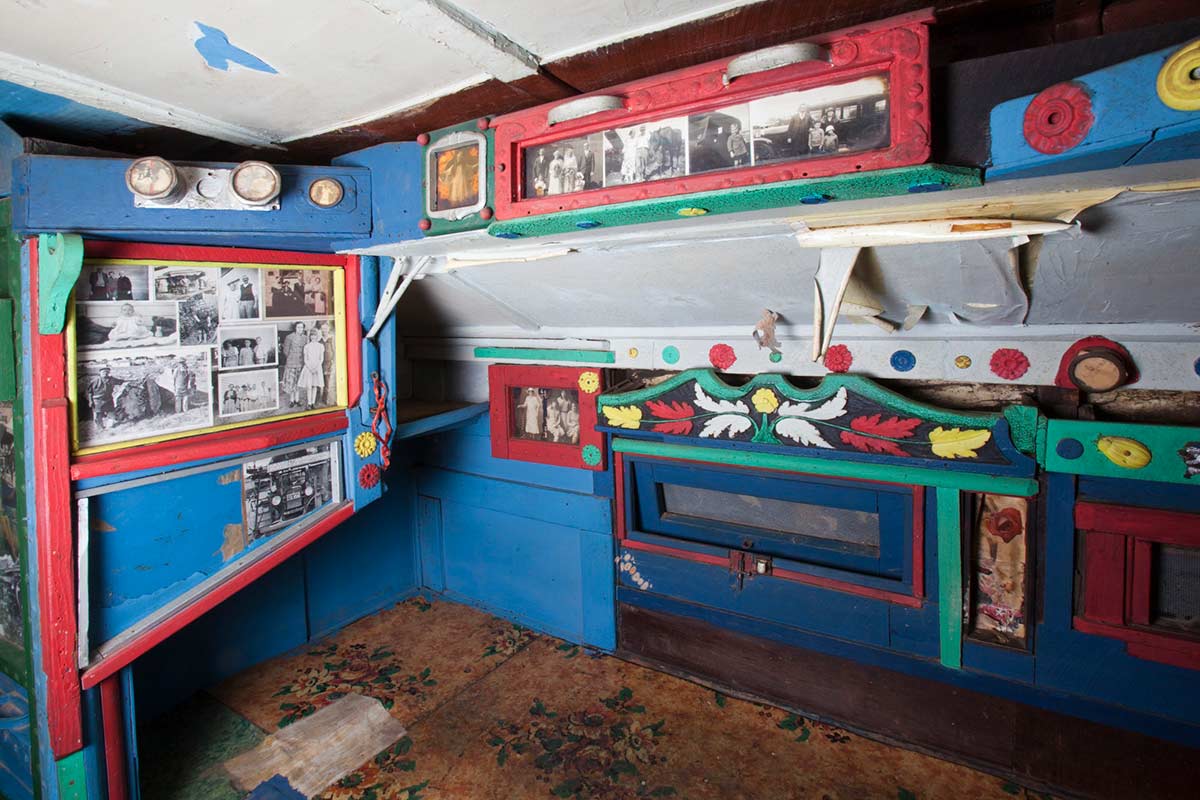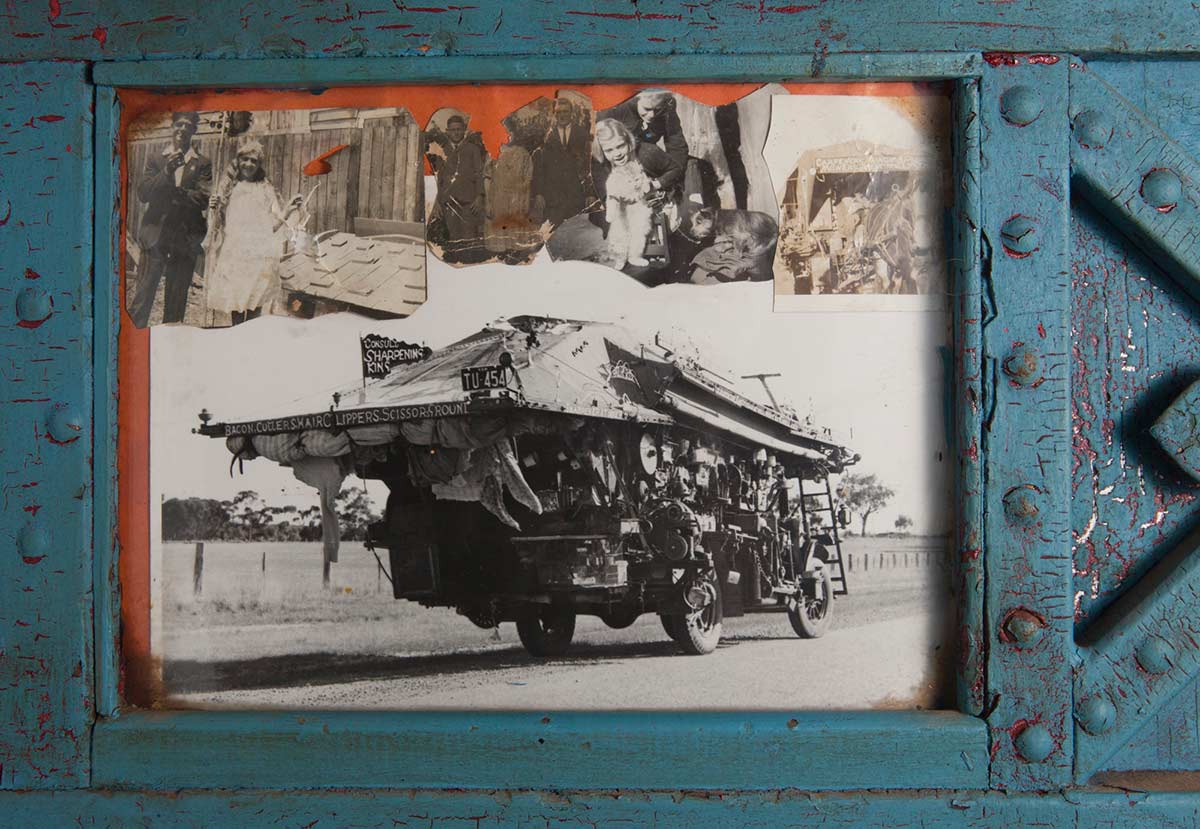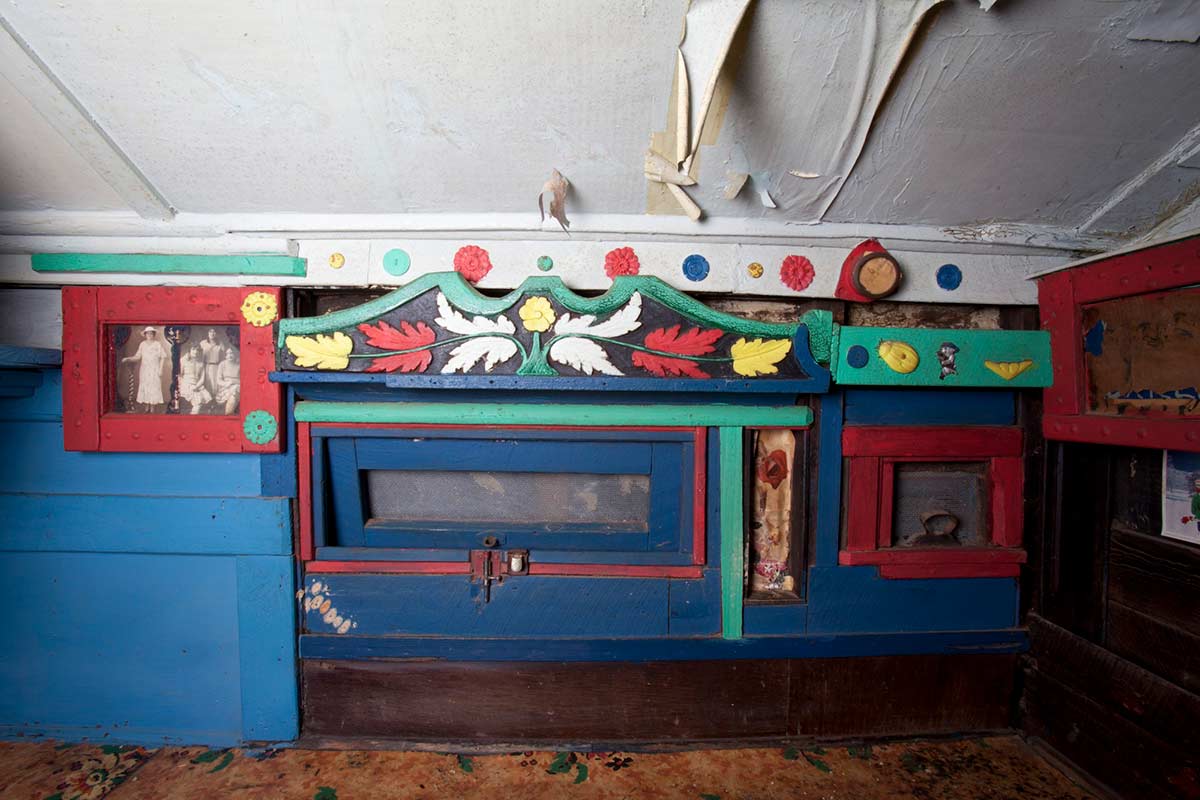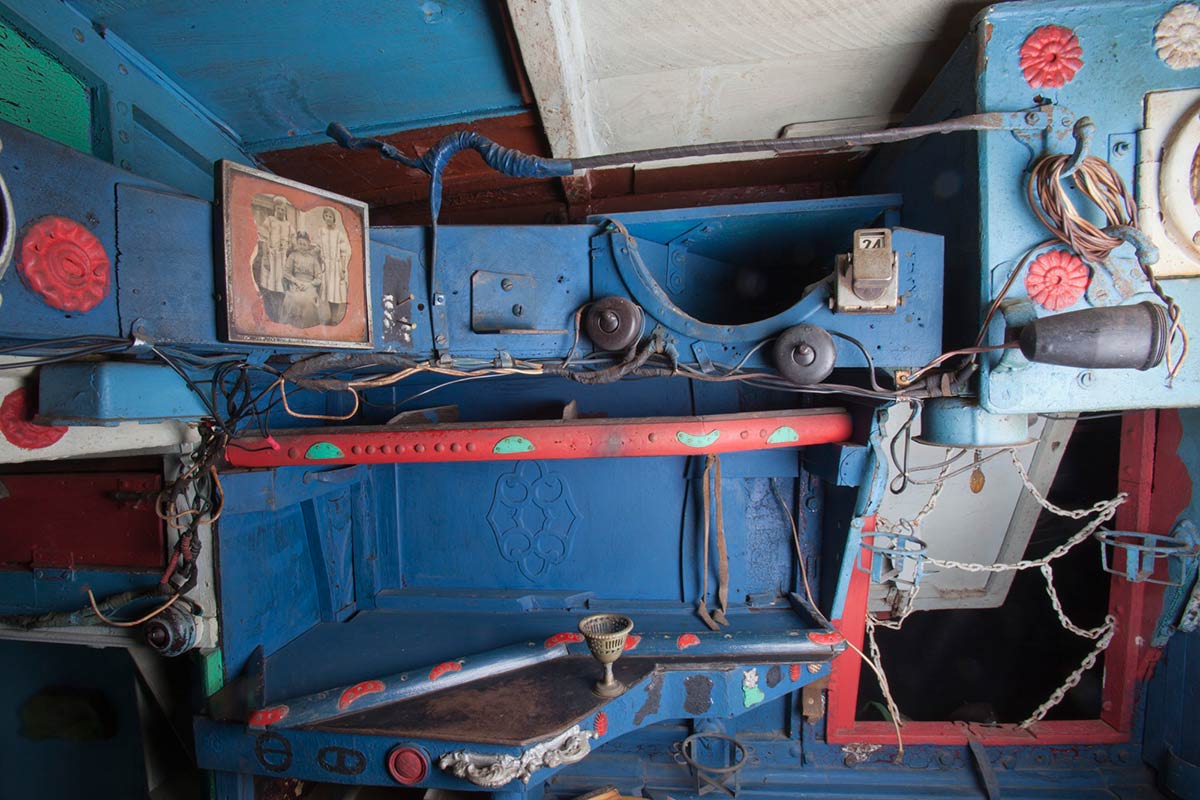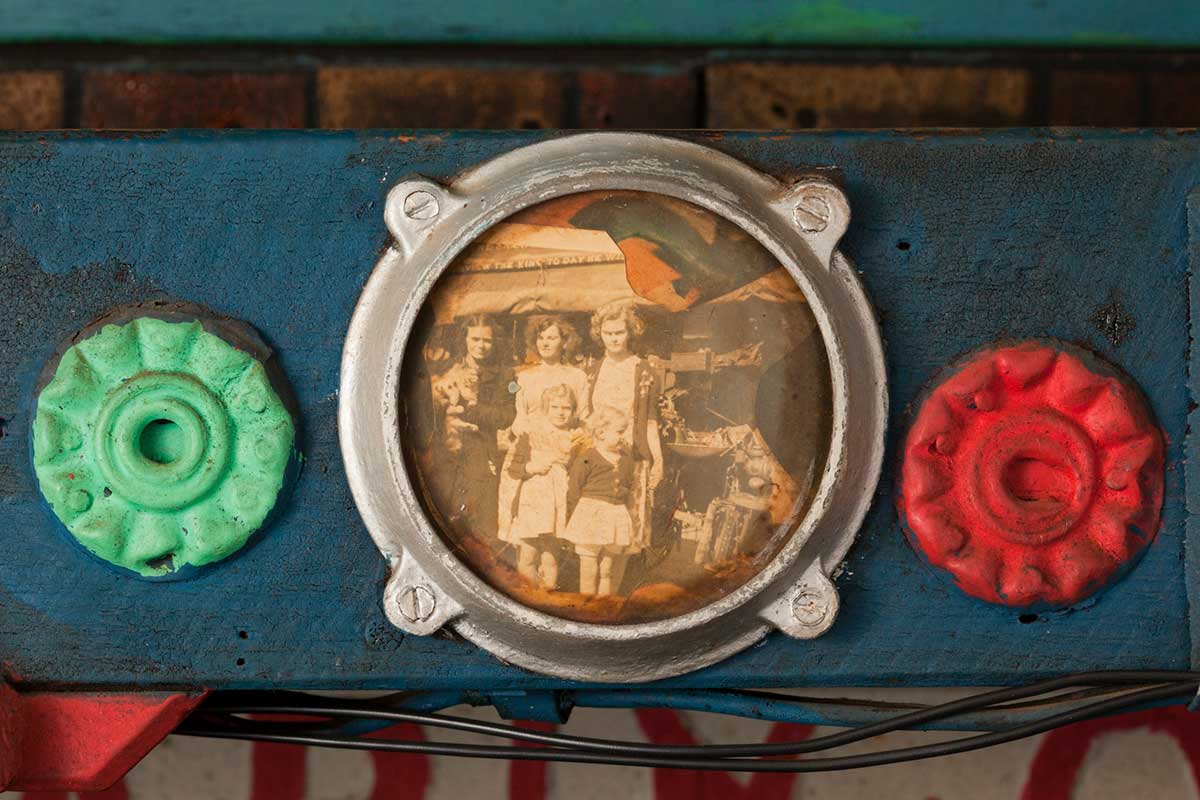This distinctive Saw Doctor's wagon was the home and workshop of Harold Wright for more than 30 years. Wright migrated from England to Australia in 1930. During the Depression of the 1930s, national unemployment levels reached over 30 per cent and many people travelled as itinerant workers to survive.
Depression
Harold Wright (about 1905–1969), a young English carpenter, arrived in Melbourne at the height of the Depression. In 1935 he used the little money he had saved to convert a horsedrawn wagon into a combined workshop and home. For the next 34 years he travelled throughout eastern Australia, promoting himself as the ‘Saw Doctor’.
Along the way, Wright met and married Dorothy Jean McDougall and together they raised a daughter, Evelyn May. The family had dogs, cats and chickens and they rarely spent more than a few days in any one place.
Wright affectionately named the wagon the 'Road Urchin' and attracted business by decorating it with signs, trinkets and bright paint. He used a variety of grinding wheels and files to sharpen all manner of items, including saws, scissors, lawnmower blades, knives and shears.
Life on the road
Moving with the times and the economy, Wright refurbished and enlarged the original horsedrawn wagon, fitting it onto the chassis of a 1928 Chevrolet light duty truck.
In the 1950s Harold recalled:
I painted it up brightly and wrote signs and decorated it to make it attractive to the public, thinking this would attract business and make life a bit easier.
The wagon was covered in signs, including 'The Sharpening King is Here' and 'All Types of Power and Hand Mowers Scientifically Ground'.
From time to time the family fell on hard times and their home was removed from the truck chassis and placed on a horsedrawn vehicle, to save on the cost of fuel. The truck was converted to a trailer in 1963 and was pulled by a 1948 David Brown tractor. A utility cabin was fitted to the tractor. It is also part of the Museum's collection.
It was far from an easy life, as Harold reflected:
Life on the road is the toughest existence a man can choose. People often say to me it must be a lovely carefree life. They don't understand the hardships caused by the weather or realise how the uncertainty of work causes constant worry.
Wright lived and worked in the wagon until his death at Cobram, Victoria, in 1969. Soon after, Dorothy sold the wagon and tractor to a secondhand dealer in Wangaratta. Peter and Wyn Herry bought the Wright's home in 1977 and kept it at their small farm outside Wangaratta. Peter recognised the remarkable vehicle that had trundled through his town during his childhood.
The Museum bought the wagon and tractor from the Herrys in 2002, ensuring that this extraordinary piece of history is preserved.
Wagon and tractor conservation
The arrival of the dilapidated wagon and tractor at the Museum signalled the beginning of an extensive conservation project to rejuvenate and stabilise it. It took 6 months just to clean it, using a process of brush vacuuming and washing. Then the wagon, tractor and contents were treated to prevent further deterioration.
Conservators stitched and reinforced the torn canvas awnings, stabilised and wax-coated the paintwork, and restored the tractor engine to working condition.
In our collection
